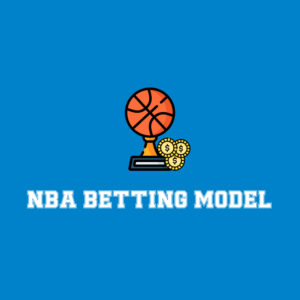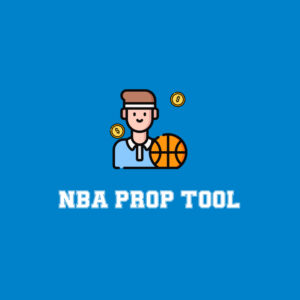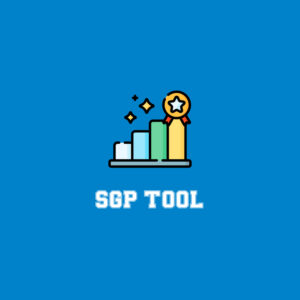
(It’s fantasy baseball draft season! The FTN Fantasy team and a host of helpful guests present our Ultimate 2025 Fantasy Baseball Guide. Check it out and prepare for the 2025 MLB season.)
The 2025 FTN VDP Fantasy Baseball Projections are here! This article will serve as a guide for our projections – what they are, what they aren’t and how to use them.
Let’s start with an important disclaimer: VDP Projections and VDP Rankings are not the same.
VDP Rankings are 5×5 roto rankings that factor in NFBC average draft position (ADP), position scarcity, category scarcity and should be referenced for 15-team, 5×5 roto snake drafts.
VDP Projections are market-agnostic, meaning they are not influenced by the market (ADP) or position scarcity factors – for example, catcher values are not artificially inflated. Our projections are essentially a full season league simulation of a 162 games-per-team season. The VDP$ value represents each player’s total production for the season — the expected fantasy value earned in 15-team 5×5 roto using my select SGP (standings gain points) denominators.
Our projections are a full-scale, harmonized MLB model developed to help with draft decisions and contextualize that VDP$ value. My grueling annual project began in November as FTN’s Chief Data Officer Frank Brank runs his regression model, providing me with a database to begin my analysis. I then spend every waking hour over the next 1.5 months building it into what you see here today. It’s the ultimate Rubik’s Cube as I deep-dive research 1,000-plus MLB players and align each player’s playing time and rate stats within aggregate (league-wide) context and logical per-team expectations. Russ Prentice helps me manage the data and we fine-tune the standings gain points denominators every season to adjust for perceived roto category scarcity.
VDP Projections Rundown
Playing Time
I project and manage the playing time for every hitter and pitcher expected to contribute to an MLB team in 2025, outside of a few exceptions. Hitters PT is measured in plate appearances, pitchers PT in innings pitched. The initial player pool contains nearly 990 players, which is roughly 16 hitters and 17 pitchers per each of the 30 MLB teams.
Players excluded from the initial player pool:
- Hitters projected for fewer than 60 PA
- Pitchers projected for under 30 IP
- MLB free agents categorized as reserve-round players
- Hitters/pitchers projected for 1-20 PA or IP in public models found on Fangraphs
Every playing time shift comes at the expense of other players’ PA and IP in the model. Example: Gavin Lux is traded to the Reds, which requires removing roughly 450 projected plate appearances from the Cincinnati Reds offense — the 350 PA he was projected for with the Los Angeles Dodgers, plus 100 for his expected PT increase with the Reds. The mirrored impact was removing a percentage of PA from a few Reds, primarily from Noelvi Marte. Removing Lux from the Dodgers’ total PA positively impacted middle infielders Hyeseong Kim, Miguel Rojas and (gulp) Chris Taylor.
A valid preseason “driver” (anything that positively or negatively affects playing time) would facilitate adding a player to the VDP Projections model. For example, if Corey Seager blows his knee out in spring training and the Rangers decided to give 18-year-old prospect Sebastian Walcott a shot at an MLB job on Opening Day (obviously, an egregious example). Assuming Seager was out long-term, Walcott would account for X number of PA, and the rest would go to Josh Smith and Ezequiel Duran. If the Rangers then trade for a prominent SS, then it’s right back to Rangers hitters in our database to re-formulate.
Ha-Seong Kim, Jesse Winker, Alex Verdugo and several others will be incorporated into the model upon signing with a team. Current free agents included in the model include hitters Pete Alonso, Anthony Santander and Jurickson Profar and pitchers Roki Sasaki, Jack Flaherty and Nick Pivetta.
Simulation and Symmetry
I set logical league-wide (aggregate) and per-team distribution to the full data set of players to simulate a full, real MLB season. The parameters set on the league-wide level involve symmetrically aligning both sides of the hitter-pitcher environment. The model captures this balance incorporating the last three seasons (2024, 2023, 2022) and our 2025 model falls within these ranges. For example, there have been this many league-wide numbers of the following stats:
- Strikeouts: between 40,500 and 42,000
- Walks: between 14,000 and 16,000
- Hits: between 39,000 and 41,000
- Home Runs: between 5,200 and 5,900
The VDP Projections model’s player pool aggregate falls within these ranges on each of these totals and more. The slight disbalance will be adjusted as more of the replacement-level or worse players (i.e. Patrick Corbin, Nick Martini) are signed and included into the projections pool.
There is symmetry and alignment on the per-team level as well. The data (rate stats and surface stats/roto categories) are logically distributed based on reasonable expectations of production. The better offenses will turn their lineup over within games more often and earn more plate appearances than the weaker ones. Same with the pitching staffs as worse rotations and bullpens are less likely to pitch in the ninth inning or extra innings, thereby accumulating fewer innings pitched than the better pitching staffs.
- Every offense has projected between 5,800 and 6,400 plate appearances where stronger offenses (Dodgers, Yankees) are on the higher end.
- Every offense has appropriately more runs than runs batted in, both of which are distributed accordingly to skill level and my rate stat inputs. The elite offenses project for 800-plus runs; the worst offenses, less than 700 – in line with the trend of the last three seasons.
- Every team pitching staff aligns within the IP range of 1,420 and 1,450. League-wide ERA, WHIP, K%, BB% and other rates are appropriately distributed on a per-player level.
- The total wins and losses for each set of team pitchers aligns with their expected, projected record. For example, the 16 Minnesota Twins pitchers in our pool combine for 87 wins and 75 losses. When a new pitcher enters the model, this shift will be accounted for. Excluding free agents, the model has 2,430 wins and 2,430 losses.
- Other statistics such as saves, holds and quality starts are in line with our 2025 projections within a logical and realistic range.
Our Custom Rankings Tool is in development and should be released within a few weeks. If you play formats outside of 5×5 15tm roto, you will be able to input your league parameters and create rankings based on VDP Projections. This includes all a VDP$/auction value for roto leagues and a point total for points leagues. This new tool will have default setups for popular H2H Points contests (ESPN, CBS, Yahoo), Underdog and NFBC Best Ball, and modified Best ball (NFBC Cutline).
Projections Updates
It’s important to note that the projections are fluid as I will continue updating them between now and Opening Day. There likely won’t be many shifts on individual projections until spring training starts unless there is an error, major omission or a major discovery. Of course, there will be slight park factor adjustments when free agents or traded players join new teams. Playing time will be adjusted accordingly.
Once spring training starts, some player projections (and the corresponding VDP$ values) may shift considerably. Outside of FA signings or trade, drivers that will move the needle would be related to injury, major personal development news or evident skills increase/decrease (like a new pitch or notably higher velocity), news about increased/decreased playing time, rotation/bullpen roster spot assumptions and lineup slot movement assumptions.
Snake Draft Rankings and Auction Values
If planning to leverage VDP Projections for your snake drafts, remember that the rankings and values are market-agnostic and make sure you’re considering actual market price of these players as well. The worst (and wrong) way to use the projections is as a top-down cheat sheet by VDP or VDP$. The most obvious reason is that it’s vital that we’re mindful of category balance (in roto leagues) and roster construction in relation to positional tiers/needs.
An obvious example would be drafting Juan Soto over José Ramírez because of their ranking even though their VDP$ difference is less than 40 cents (both are $34-$35 players). Instead, we want to weigh Soto’s strengths against Ramírez’ – everything from specific roto production per category, health, reliability, position, etc. Remember that everything in the model is relative. Jarren Duran having a lower VDP$ than Michael Harris II shouldn’t necessarily implore us to jump Harris over Duran in our drafts. The model still projects Duran for nearly a full season of PT with only a slight overall decrease on his incredible 2024 roto season, which obviously may or may not happen (I can’t see the future). Our Harris projection incorporates a healthier 2025, some skills increase, and a notable PT increase, specifically some PA at or near the top of a hopefully rebounding Braves offense.
Do not take the projections as bible. Instead, use the ADP-VDP outliers as an opportunity to dig into the players further and come to your own conclusions. VDP sure does love guys like Jung Hoo Lee, Michael Toglia, Cristopher Sánchez, Cody Bradford and Seiya Suzuki (again) but everything from health to skills decline to factors outside of their control could lead to none of them producing a fantasy profit in 2025. Note that our secret sauce might be weighing categories like WHIP or AVG more than other systems.
Here are the three most notable profitable outliers from 2024 VDP Projections:

2024 VDP Accuracy — No. 1 for Roto
After the season ended, we tested the aggregate accuracy of standard roto categories comparing 2024 year-end MLB results with projections from FTN (VDP) and THE BAT, ATC, Steamer, ZiPS DC – four of the public projection systems on Fangraphs.
- The 10 standard roto categories, plate appearances and innings pitched were measured.
- Hitters were measured separately from the pitchers.
- “Acc Score” is a cumulative accuracy score for all categories.
- The accuracy score closest to zero (or lowest number) is the most accurate.

For 2024 roto categories in league aggregate, FTN VDP was the most accurate system. This is just one method of measuring, and it does not measure the per-player level. Though I pride myself on my work and time spent, please don’t take this as a braggadocious declaration of war against other projection systems. Steamer is the OG. The BAT, ATC and ZiPS are formulated and managed by incredibly sharp analysts (respectively, Derek Carty, Ariel Cohen, Dan Szymborski). Fangraphs Depth Charts is Roster Resource creator Jason R.R. Martinez’s playing time layered atop Steamer and Jason RR is the go-to playing time aficionado in fantasy baseball. There are projection systems behind paywalls (RotoWire, BaseballHQ, Rudy Gamble’s Razzball, Todd Zola’s Mastersball) that are all terrific as well. Tanner Bell and Jeff Zimmerman’s The Process/Smart Fantasy Baseball contains great environment-building tools for those well-versed in Excel. If you don’t do this already or don’t know how, consider leveraging an Excel wiz friend to help build your own data model that weighs your mix of different projection systems. Though you’ll be in great shape this season if you only use FTN VDP.
Pitcher Wins and Value Volatility
Pitcher wins are the most volatile and unpredictable roto category. A starting pitcher with 140-plus innings can greatly shift his value (VDP$) based on the number of wins projected.
For example, Aaron Nola — the most consistent and healthy starting pitcher of the last half decade — is projects for considerably less value ($17 to $12) than teammate Cristopher Sánchez despite an ADP about 75 picks (five rounds) higher. Sánchez’ higher value is partially derived from a lower projected ERA (3.22 to 3.87). Nola projects for 13 wins and Sánchez for 12. If we flip the win totals, Nola would be the $15 arm and Sánchez worth $13, which is a bit more in line with the ADP.
Pitcher wins is where we’ll find our highest volatility rate impacting the VDP$ so don’t spend too much time overthinking it. The main takeaway from the Phillies example is that VDP assumes Sánchez is a value relative to market price. Part of what we’re paying a premium for with Nola is his health and innings consistency. If he produces like career marks (3.70 — 1.19) with 180-plus strikeouts and scores 15-plus wins, fantasy managers will make a profit on him. Despite averaging an insane 199 innings over his last six full seasons, Nola has averaged 12.5 wins per season and his 14 in 2023 was his first time with more than 12 since winning 17 in 2018. A win projection of 11-13 is reasonable and the primary driver of his value may very likely be wins.
League Environment Expectations for 2025
Runs were down roughly 5% from 2023 to 2024, home runs down 7.5%. The Atlanta Braves offense was the biggest overall disappointment in 2024 as the Ronald Acuña Jr. and Austin Riley injuries were major catalysts in their 34% reduction in runs scored from 2023 to 2024. On the flipside, the Arizona Diamondbacks saw a 19% increase in runs scored and lead the league.
Our 2025 league-wide environment expectation lands right between the last two seasons. That is probably a good place to start for setting 2025 roto category targets for the 80th and 90th percentiles.
The FTN site showcases each player’s standard 5×5 roto categories, but if you’d like to see every projected category and rate, please download our file. Holds, QS, SLG – you name it, we’ve projected it and will continue to update daily. Our Custom Rankings Tool will be released relatively soon to really provide an edge over your league-mates. Please reach out to me if you have any questions or suggestions.
Happy drafting!





























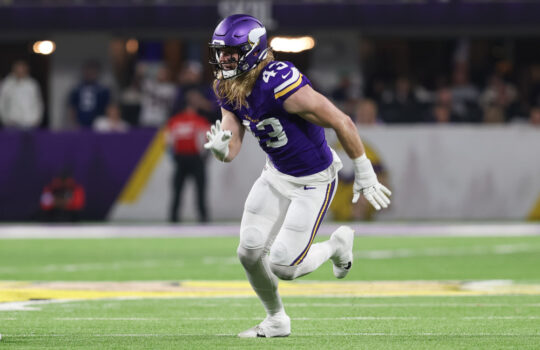



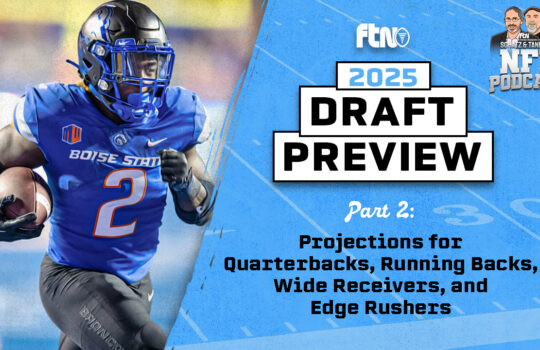

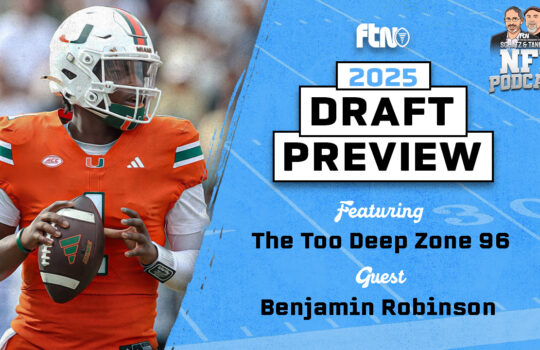





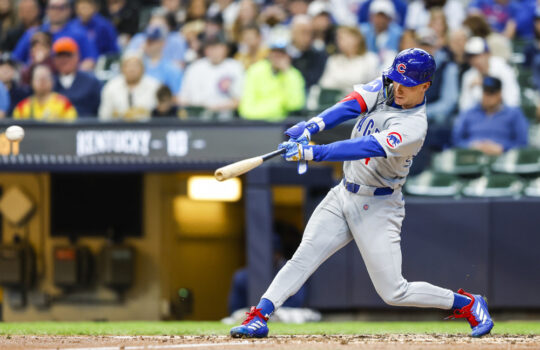

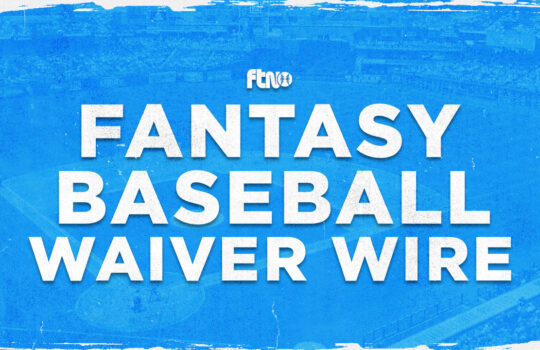

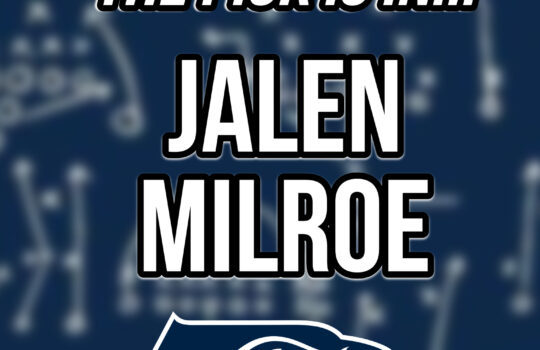

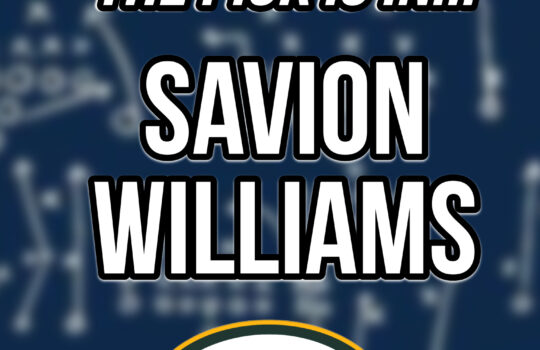
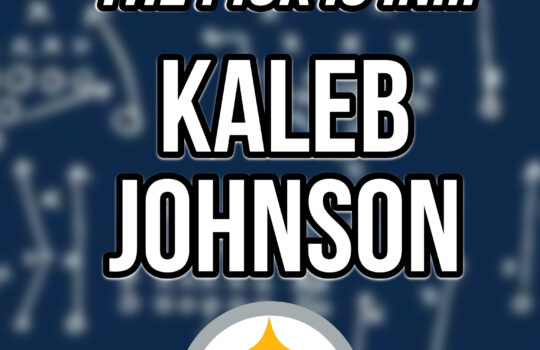

 New York Jets
New York Jets  New England Patriots
New England Patriots  Miami Dolphins
Miami Dolphins  Buffalo Bills
Buffalo Bills  Pittsburgh Steelers
Pittsburgh Steelers  Cleveland Browns
Cleveland Browns  Cincinnati Bengals
Cincinnati Bengals  Baltimore Ravens
Baltimore Ravens  Tennessee Titans
Tennessee Titans  Jacksonville Jaguars
Jacksonville Jaguars  Indianapolis Colts
Indianapolis Colts  Houston Texans
Houston Texans  Las Vegas Raiders
Las Vegas Raiders  Los Angeles Chargers
Los Angeles Chargers  Kansas City Chiefs
Kansas City Chiefs  Denver Broncos
Denver Broncos  Washington Commanders
Washington Commanders  Philadelphia Eagles
Philadelphia Eagles  New York Giants
New York Giants  Dallas Cowboys
Dallas Cowboys  Minnesota Vikings
Minnesota Vikings  Green Bay Packers
Green Bay Packers  Detroit Lions
Detroit Lions  Chicago Bears
Chicago Bears  Tampa Bay Buccaneers
Tampa Bay Buccaneers  New Orleans Saints
New Orleans Saints  Carolina Panthers
Carolina Panthers  Atlanta Falcons
Atlanta Falcons  San Francisco 49ers
San Francisco 49ers  Seattle Seahawks
Seattle Seahawks  Los Angeles Rams
Los Angeles Rams  Arizona Cardinals
Arizona Cardinals 
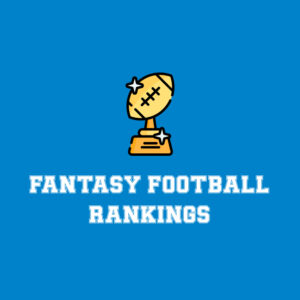
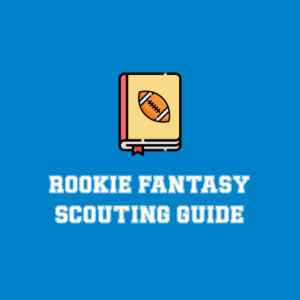
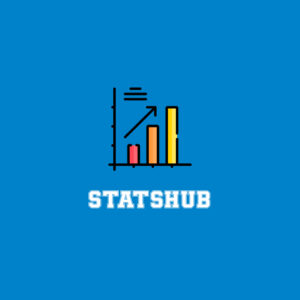





 Boston Celtics
Boston Celtics  Brooklyn Nets
Brooklyn Nets  Philadelphia 76ers
Philadelphia 76ers  New York Knicks
New York Knicks  Toronto Raptors
Toronto Raptors  Chicago Bulls
Chicago Bulls  Detroit Pistons
Detroit Pistons  Milwaukee Bucks
Milwaukee Bucks  Cleveland Cavaliers
Cleveland Cavaliers  Indiana Pacers
Indiana Pacers  Orlando Magic
Orlando Magic  Atlanta Hawks
Atlanta Hawks  Charlotte Hornets
Charlotte Hornets  Miami Heat
Miami Heat  Washington Wizards
Washington Wizards  Denver Nuggets
Denver Nuggets  Minnesota Timberwolves
Minnesota Timberwolves  Oklahoma City Thunder
Oklahoma City Thunder  Portland Trail Blazers
Portland Trail Blazers  Utah Jazz
Utah Jazz  LA Clippers
LA Clippers  Golden State Warriors
Golden State Warriors  Los Angeles Lakers
Los Angeles Lakers  Phoenix Suns
Phoenix Suns  Sacramento Kings
Sacramento Kings  Dallas Mavericks
Dallas Mavericks  Houston Rockets
Houston Rockets  Memphis Grizzlies
Memphis Grizzlies  New Orleans Pelicans
New Orleans Pelicans  San Antonio Spurs
San Antonio Spurs 
